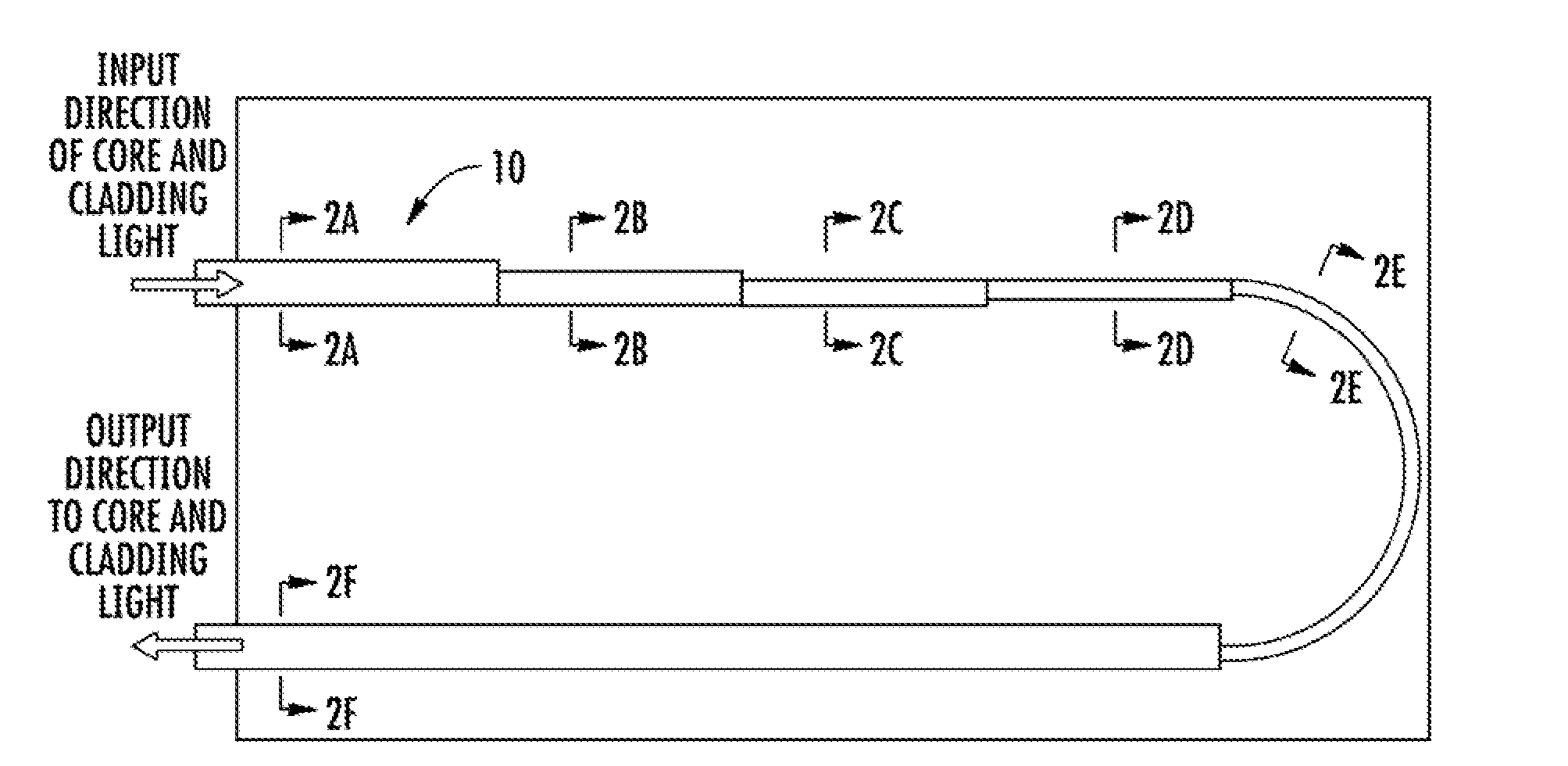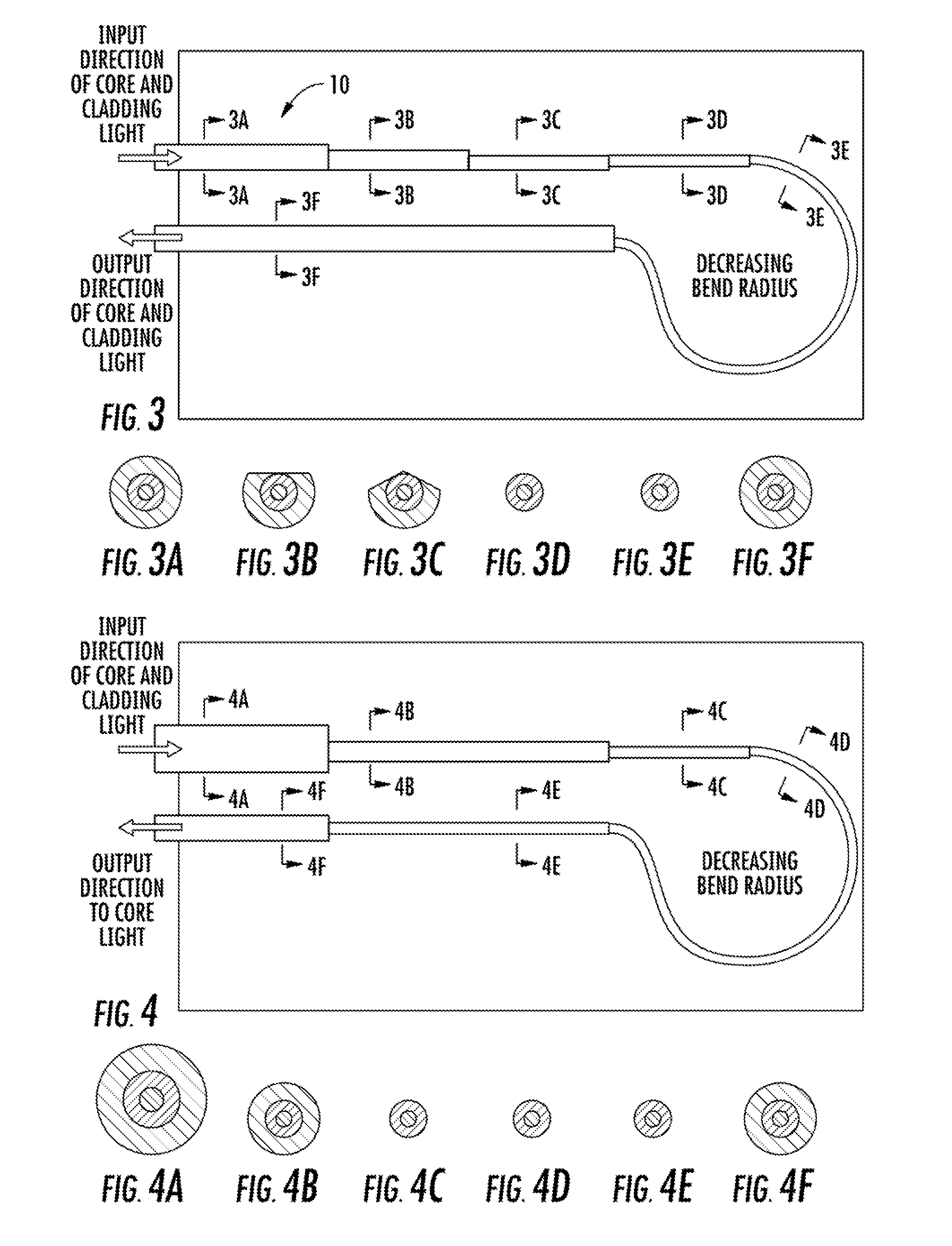Cladding mode stripper
a technology of optical fiber and mode stripper, which is applied in the direction of optical fibre with multi-layer core/cladding, optical waveguide light guide, instruments, etc., can solve the problems of degradation or catastrophic damage of fiber coating (acrylate/silicon), and achieve the effect of reducing operating temperatures and high efficiency
- Summary
- Abstract
- Description
- Claims
- Application Information
AI Technical Summary
Benefits of technology
Problems solved by technology
Method used
Image
Examples
Embodiment Construction
[0031]Now referring to the drawings, the system for removing cladding mode light from a fiber laser is shown and generally illustrated in the figures. As can be seen, the present invention provides an improved cladding mode stripper that operates at a much higher efficiency as compared to the prior art in order to reduce operating temperatures at splices and complex optical devices downstream.
[0032]As stated above, in high power fiber optic systems, such as may include fiber amplifiers, fiber lasers, and fiber coupled diode lasers, a significant amount of light may be guided in the cladding of the optical fiber for the purpose of excitation and amplification. However, a significant amount of the cladding light can remain in the cladding as the signal is passed into a transmission fiber so as to interfere with the output from the core. In certain circumstances, the cladding light can also be of a sufficient power level to heat the cladding, which can decrease performance and / or cause...
PUM
 Login to View More
Login to View More Abstract
Description
Claims
Application Information
 Login to View More
Login to View More - R&D
- Intellectual Property
- Life Sciences
- Materials
- Tech Scout
- Unparalleled Data Quality
- Higher Quality Content
- 60% Fewer Hallucinations
Browse by: Latest US Patents, China's latest patents, Technical Efficacy Thesaurus, Application Domain, Technology Topic, Popular Technical Reports.
© 2025 PatSnap. All rights reserved.Legal|Privacy policy|Modern Slavery Act Transparency Statement|Sitemap|About US| Contact US: help@patsnap.com



